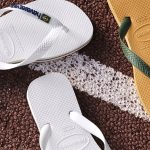Dick’s Sporting Goods for the third quarter in a row raised its outlook for the year as earnings again came in well above Wall Street targets and sales topped tough year-ago comparisons. Comps are now expected to expand about 25 percent for the year. On a call with analysts, Lauren Hobart, president and CEO, said Dicks’ SG continues to benefit from heightened interest in fitness and outdoor activeness born out of the pandemic.
“During a time when consumers are making lasting lifestyle changes with an increased focus on health and fitness, and greater participation in outdoor activities, we believe that Dick’s Sporting Goods has become synonymous with sport in the United States,” said Hobart. “Nearly our entire category portfolio has re-baselined meaningfully higher versus pre COVID sales levels.”
Payback From Transformational Journey
However, she also stressed the continued strong results reflect transformational efforts that began in the back half of 2017 and focused on delivering more differentiated and premium product offerings and overall stronger merchandise presentations. She added, ‘We also improved our service and selling culture, made our stores more experiential, and reallocated floor space to regionally relevant and growing categories,” referencing moves to exchange space previously dedicated to hunting and electronics to stronger-selling categories such as apparel and footwear.
“These changes fueled improved results and significantly improved our comp sales trajectory, well before the pandemic,” said Hobart. “For years, we’ve also invested in technology and data science to build our best-in-class omnichannel platform. This allowed us to quickly capitalize on athlete needs and strong consumer demand throughout 2020 and deliver a full-year comp sales increase of nearly 10 percent. Moving to 2021 we announced today that we’ve raised our full-year guidance for the third time this year, and now expect our comp sales to increase between 24 and 25 percent.”
The transformation positioned Dick’s to capitalize on strong consumer demand and helped the chain gain market share in key categories, driven by enhanced product access, service and omnichannel capabilities.
“Looking ahead, we’re well-positioned to continue gaining share, and we remain optimistic about the long-term trends in our most important categories, like athletic apparel, footwear, team sports and golf,” said Hobart.
She added that Dick’s remains “very optimistic” about its longer-term operating margin, driven by a number of permanent changes versus pre-COVID levels, including “a highly differentiated product assortment that is less susceptible to broader promotional pressures, more granular management of promotions and significantly higher profitability of our e-commerce channel.”
Despite the strong quarter and bullish outlook, Dick’s shares were down about 10 percent in mid-day trading as some investors took profits amid margin and supply chain concerns. Shares are now trading at about $130 after starting the year at $56.21.
Q3 Same-Store Sales Expand 12 Percent Year-Over-Year
In the quarter ended October 30, net sales were $2.75 billion, an increase of 13.9 percent year-over-year and 40.0 compared to the third quarter of 2019. Wall Street’s consensus estimate had been $2.51 billion.
Consolidated same-store sales advanced 12.2 percent, which followed consolidated same-store sales increases of 23.2 percent in the third quarter of 2020 and 6.0 percent in the third quarter of 2019. The comp gains were driven by growth across each of its three primary categories of hardlines, apparel, and footwear. Transactions grew 8.5 percent while the average ticket was up 3.7 percent.
Brick and mortar comps rose approximately 15 percent versus 2020 and delivered a 31 percent sales increase when compared to 2019 with roughly the same square footage.
E-commerce sales increased 1 percent versus last year on top of a 95 percent online sales increase in the third quarter of 2020. Compared to Q319, e-commerce sales increased 97 percent with year-ago sales gains amplified by in-store restrictions in the early stages of the pandemic. As a percent of sales, e-commerce penetration grew from 13 percent in 2019 to 19 percent in the current quarter and down from 21 percent from the 2020 third quarter.
Hobart said Dick’s continues to drive a significant improvement in the profitability of its e-commerce channel by leveraging fixed costs, sustained customer adoption of in-store pickup and curbside as well as fewer and more targeted promotions. Stores fulfilled supported 90% of total sales, including fulfilling approximately 70 of its online sales, in Q3.
Gross margins Expand 334 Basis Points
Gross margins were 38.45 percent in the quarter, improving 334 basis points compared to last year. Merchandise margins expanded 301 basis points and leverage on fixed occupancy cost reached 111 basis points due to the sales increase. The increase in merchandise margin was primarily driven by fewer promotions due to an increasingly differentiated assortment and discipline promotional strategy as certain categories in the marketplace continue to be supply constrained. Dick’s also benefited from a favorable sales mix and was able to pass through selected price increases to help cover merchandise cost increases from higher supply chain and input cost.
Hobart said, “Our increasingly differentiated product assortment, combined with our discipline promotional strategy and cadence is continuing to drive significantly higher merchandise margin rates.”
As expected, these improvements were partially offset by higher freight costs resulting from global supply chain disruptions and its focus on prioritizing inventory availability over costs. Compared to 2019, gross margins improved 886 basis points as merchandise margins improved 578 basis points due to fewer promotions, as well as leverage on a fixed occupancy cost of 370 basis points, which again was partially offset by higher freight costs.
SG&A expenses leverage 151 basis points compared to last year, to 23 percent of sales due primarily to the increase in sales. SG&A dollars increased $40.8 million due primarily to current year cost increases to support the growth in sales.
The prior year’s SG&A reflected COVID-related costs although that was partly offset in the current year by the transition of hourly teammates to compensation programs with a longer-term focus, including increasing and accelerating annual merit increases and higher wage minimums.
Hopart said, “In our stores, we continue to make Dick’s a great place to work as we know that our people are a competitive differentiator and a great teammate experience drives a great athlete experience. In fact, we recently earned a place on Fortune’s list of best workplaces in retail for 2021.”
Compared to 2019 and on a non-GAAP basis, SG&A expenses as a percent of net sales leveraged 325 basis points.
Consolidated net income for the third quarter was $316.5 million, or $2.78 per share, against $177.2 million, or $1.84 a year ago, which included $48 million of COVID-related expenses. In the 2019 third quarter, earnings were $57.6 million, or 66 cents per share.
On an adjusted non-GAAP basis, net income improved 76.8 percent to $322.2 million, or $3.19 per share, from $182.2 million, or $2.01, a year ago. Results were well above Wall Street’s consensus target of $1.97. Non-GAAP profits were $44.8 million, or 52 cents, in Q319.
Calling out some other highlights in the quarter, Hobart noted that Dick’s continues to see strong retention of the 8.5 million new customers acquired last year while adding another 1.7 million during this quarter. Its active athlete database is at a record high.
Dick’s private-label brands, including DSG, Calia and VRST, are “driving exclusivity within our assortment and gaining meaningful traction” with customers.
At the same time, she referenced moves by Nike, Adidas and other national brands to continue to narrow distribution and focus more on their most strategic partners as beneficial. Hobart said, “Dick’s offers them something unique and valuable. We are rooted in sport and can showcase an entire brand portfolio, including apparel, footwear and hard lines across our over 800 stores and online. Our Brand Partners continue to make significant investments in our business every year and provide us with increasing allocations of exclusive and differentiated products. These top-of-the-line products are highly coveted and rarely promoted, driving significant sales and margin momentum. Our strategic partnerships with key brands have never been stronger and we’re making big bets with important brand partners.”
She cited a new collaboration that enables Dick’s and Nike’s customers to connect their Dick’s Scorecard and Nike Membership accounts through Dick’s mobile app to gain access to products, experiences and member-exclusive launch product. Hobart said, “Together, we’ll embrace our collective strengths and capabilities to expand our reach, connect with even more athletes, and most importantly serve them better.”
Looking ahead, Dick’s plans to explore additional opportunities to work with Nike and our other strategic partners, she said.
On newer concepts, Hobart said Dick’s is “very pleased” with the performance of its first two Dick’s House of Sports stores in Rochester and Knoxville. She said, “House Of Sport is built around experience, service, community and product, setting an unparalleled standard for sports retail and athlete engagement. Moving forward, we’re excited to continue to refine and grow House of Sports while pulling key learnings into the rest of the next chain.
The retailer is likewise “excited by the early results” of its first two golf Galaxy performance centers located outside of Boston and in Minneapolis St. Paul. The first Public Lands store, focused on outdoor enthusiast, opened in Pittsburgh with a second store opened in Columbus a few weeks ago. Said Hobart, “While still early, Public Lands is off to a strong start and we are very enthusiastic about this growth opportunity and its goal to get more people outside exploring and protecting America’s public lands.”
Inventories Increase 7.3 Percent
Inventory levels at the quarter’s end increased 7.3 percent compared to the end of Q3 last year. Dick’s officials said its buying team continues to aggressively chase product to meet demand and prioritize inventory availability over cost.
“Amidst a very dynamic environment, our team has done an excellent job working with our vendor partners and with our vertical brand manufacturers to ensure a robust flow product to meet strong demand,” said Hobart. “We ordered aggressively to get ahead of this disruption and our quarter-ending inventory levels increased 7.3 percent compared to the end of the same period last year. While there will continue to be inventory challenges across the marketplace, our fourth quarter is off to a strong start and we feel that we are well-positioned within our industry this holiday season.”
Full Year 2021 Outlook
Looking ahead, updated guidance calls for :
- Sales in the range of $12.12 billion and $12.19 billion, up 39 percent at the midpoint versus 2019 and 27 percent versus 2020. Previously, sales were expected in the range of $11,520-$11,720 million, up 33 percent at the midpoint versus 2019 and 21 percent versus 2020;
- Same-store sales in the range of 24.0 percent to 25.0 percent, up from guidance of 18.0 percent and 20.0 percent previously;
- EPS in the range of $12.88 to $13.06, up 288 percent at the midpoint versus 2019 and 127 percent versus 2020. Previously, EPS was expected in the range of $11.00 to $11.45, up 120 percent versus 2019 and 29 percent versus 2020, up 236 percent at the midpoint versus 2019 and 96 percent versus 2020; and
- EPS on a non-GAAP basis in the range of $14.60 and $$14.80, up 298 percent at the midpoint versus 2019 and 140 percent versus 2020. Previously, adjusted EPS was expected in the range of $12.45 to $12.95, up 244 percent at the midpoint versus 2019 and 108 percent versus 2020.
Photo courtesy Dick’s Sporting Goods
















